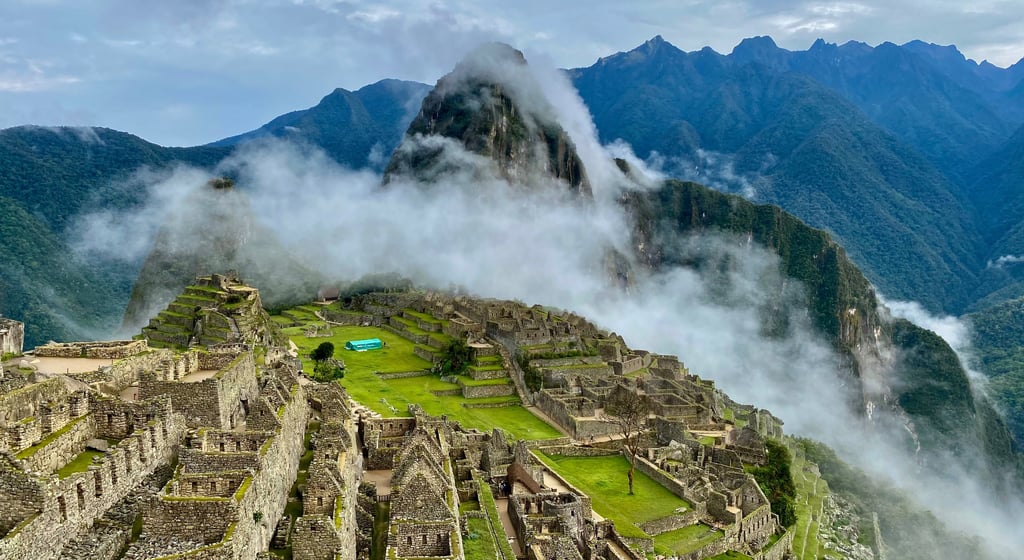Travel Tips for Cusco, the Sacred Valley and Machu Picchu, Peru


Cusco, the Sacred Valley and Machu Picchu Live Up to the Hype
Most people do not need an introduction to Cusco, the Sacred Valley and Machu Picchu, as these places are popular bucket-list destinations for many travellers. In this blog, I'll highlight a few things that you may not already know, including a few travel tips.
Cusco is among the oldest continuously inhabited cities in the western hemisphere, with settlements dating as far back as 1000 BC. Cusco's name derives from the Quechua word Qosqo which means "centre" or "navel" and the Incas believed that Cusco was the centre of the world. It served as the capital of the Inca Empire from the 13th to the 16th centuries. By the time the Spanish arrived in the 16th century, the Inca empire reached as far north as Quito, Ecuador and as far South as Santiago, Chile.
The Incas are renowned for their architecture (particularly their stone walls built without mortar), expansive network of roads, terraced farms, textiles and astronomical observations. A visit to Cusco, the Sacred Valley and Machu Picchu will provide opportunities to dive deeper and learn more about these fascinating achievements to better appreciate and understand the Incas. Machu Picchu was one of the most incredible travel experiences of my life. I count myself among those travellers who agree that Machu Picchu lives up to the hype. It was absolutely mind-blowing.
In addition, the archeological sites found throughout the Sacred Valley offer a great prelude to Machu Picchu. I recommend that you take a guided tour of Chinchero, Moray, Ollantaytambo, and Pisac before you visit Machu Picchu. That way, you will see and learn a few things about the Incas before you visit Machu Picchu. We took this excellent Airbnb Experience Tour of the Sacred Valley which included an English-speaking guide and a buffet lunch with typical Peruvian dishes. And it's easy to hire an English-speaking guide outside of the main entrance to Machu Picchu when you arrive. We shared the cost with two other travellers (only 75 soles per person for a group of four). We learned so much during our guided tours of the Sacred Valley and Machu Picchu.
We also booked our own Machu Picchu entry tickets and Peru Rail train tickets from Cusco to Aguas Calientes (the town near Machu Picchu). It was easy to do ourselves and was significantly cheaper compared to booking a package through a travel company. You just need to book a few months in advance and ensure that you choose the correct train station for your departure depending on where you will be based. We departed from the San Pedro station which is very centrally located near the main plaza in Cusco.
Check out the Wander Yonder YouTube video below for a short travel video featuring an overview of Cusco, the Sacred Valley and Machu Picchu, including travel highlights and insights to help enhance your trip to these captivating places in Peru.
Cusco, the Sacred Valley and Machu Picchu are Generally Safe for Tourists
Although these areas are generally considered to be safe, they do experience petty crime like most tourist areas. Be mindful of your belongings and surroundings at all times - and avoid doing anything that will make you a target, including wearing expensive jewellery, or flashing your expensive phone or camera, particularly while you are outside of the main tourist areas. Extra precaution should always be taken at night to avoid being alone on dark and empty streets, particularly in Cusco.
Traffic is very chaotic in Cusco and do not expect cars to stop for you at crosswalks unless the traffic light is clearly red. Be extremely careful crossing the street.
Cusco, the Sacred Valley and Machu Picchu are Located at High Altitude
Cusco will likely be your base while you're visiting these areas - and it sits at an altitude of about 3400 meters (11,200 feet) above sea level. Upon arrival, most people experience symptoms of altitude sickness, such as shortness of breath, tightening of their chest, headache, dizziness, nausea, fatigue, problems with sleep and loss of appetite. Symptoms usually begin within 12 to 24 hours of reaching higher elevation and get better within a few days after your body adjusts. However, some people will experience lingering symptoms that last much longer. For example, I had headaches almost every night after dinner during my month-long stay in Cusco.
In higher elevations, your body needs to work harder to maintain blood oxygen levels, increasing your respiration rate and leading your body to lose water faster than at sea level. Your risk of dehydration increases significantly. Places at higher altitude also have lower humidity, compounding the risk for dehydration. Drinking more water than usual is very important to alleviate symptoms and prevent dehydration. Health experts suggest increasing your water intake by an additional 1 to 1.5 litres for a total of 3-4 litres a day.
The Tap Water is Not Safe to Drink
Most people know the water is not safe to drink in Peru. However, many hotels and Airbnbs include drinking water as part of their services for guests through large refillable water containers or built-in water filter systems. I suggest asking if drinking water is included before you book a place - or be prepared to buy bottled water constantly.
Money Matters
The sol (S/) is the official currency in Peru but American dollars are accepted at many restaurants, bars, and hotels - though you are better off using the local currency to avoid the terrible exchange rates offered for cash dollars. Many of the local ATMs also charge very high fees ($10-12) for cash withdrawals, but I found that the ATMs labelled "MultiRed" which are connected to "Banco de la Nacion" do not charge a local withdrawal fee and allow up to 400 soles per transaction. If you use these ATMs, you only have to worry about the withdrawal fees from your own bank, if applicable. Credit cards are also widely accepted at restaurants, cafes and bars, but sometimes they add an extra 5 percent for payment by card. Cash is king in Peru.

